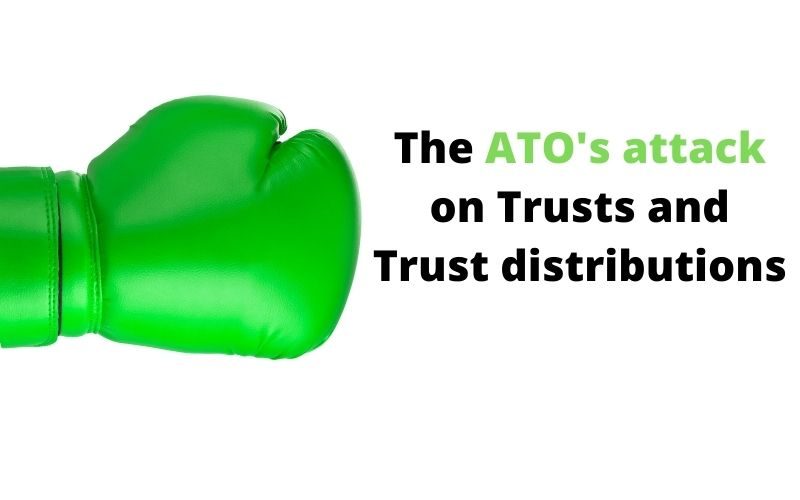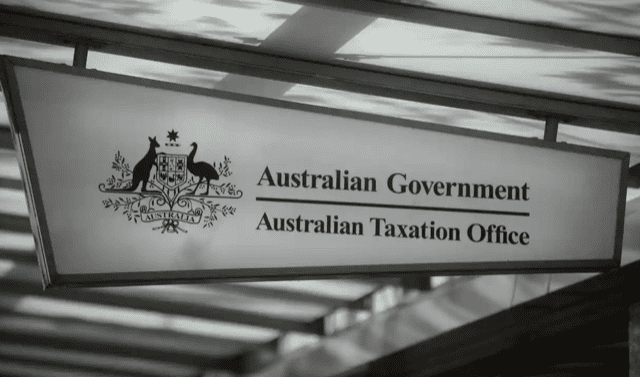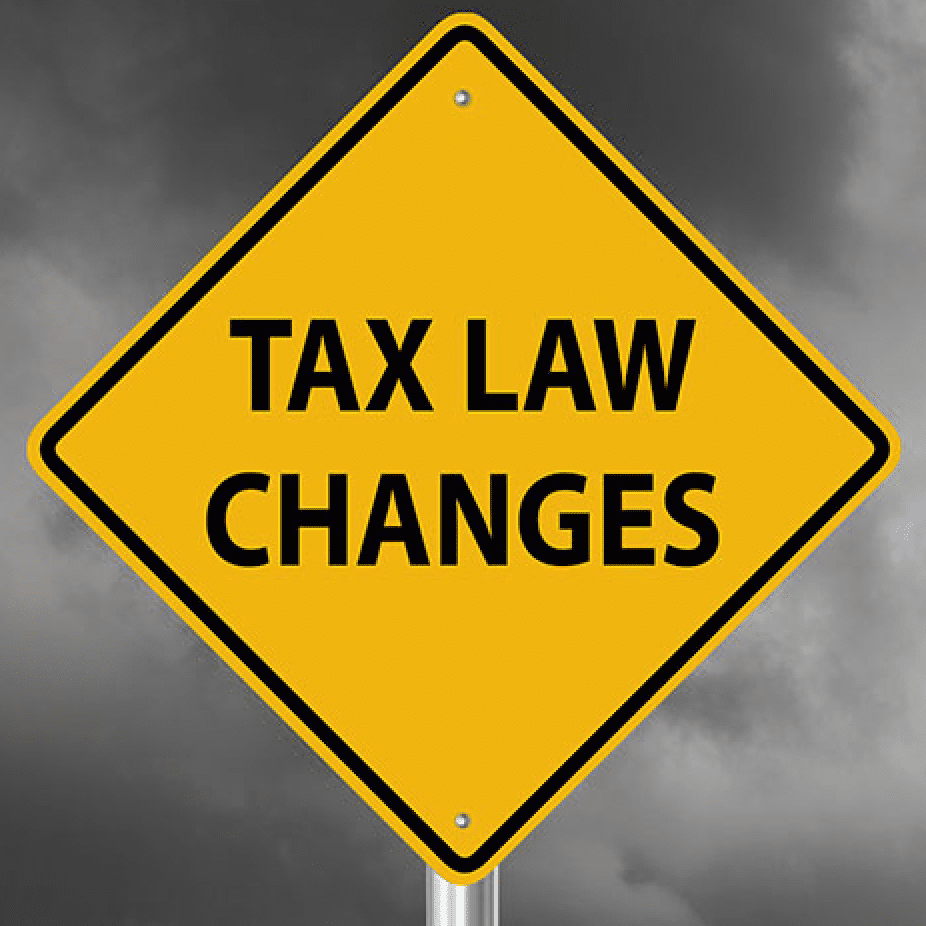ATO Attack on Trust Distributions

If you have a Family Discretionary Trust you need to be aware that the ATO is now targeting this area. Where your trust is used to distribute income to family members on lower tax brackets the ATO is seeking to essentially tax trust distributions to family members that do NOT physically receive that money, at the maximum tax rate of 47%
The ATO have just a released tax ruling that will stop commonly used trust distributions to family members. It’s one of the most significant developments for the taxation of trusts in over two decades. As a result of these ATO rulings your options to spread your trust income across your family members may be vastly limited and if so it could mean that your overall tax payable could increase.
For many years, it has been common practice by all business owners and investors who use Family Discretionary Trusts to look to spread trust income across family member beneficiaries. Trust distributions are often made to adult children for asset protection and estate planning purposes. Sometimes, the adult children in a family may have lower tax rates than their parents, so the overall tax rate % for the family group is lower as a result of the spread of these trust distributions.
However, on 23 February 2022 the ATO issued Taxpayer Alert TA 2022/1 "Parents benefiting from the trust entitlements of their children over 18 years of age”.
This is a game changer!
It states that the ATO believes that parents who make trust distributions to their adult children and then arrange for their children to give the distribution back to them are only doing this to reduce tax. The ATO plans to invalidate the trust distribution and tax the trustee of the trust at 47% on the amount of the distribution, and they may charge penalties on this as well.
The ATO have stated that they can go back as far as the 2015 tax year to review trust distributions. This goes against what has been commonly done for over 40 years and may vastly restrict how your trust distributes profits in the future.
HOW TRUSTS WORK
A Trust is an arrangement where (a trustee) usually a Pty Ltd Company holds assets ON TRUST for the benefit of (it’s beneficiaries), which typically includes family members, other Trusts,
and could also include a “Bucket Company”. When the Trust makes a profit (either from investments or a business), the trustee then
decides on who will benefit and receive those profits.
Company holds assets ON TRUST for the benefit of (it’s beneficiaries), which typically includes family members, other Trusts,
and could also include a “Bucket Company”. When the Trust makes a profit (either from investments or a business), the trustee then
decides on who will benefit and receive those profits.
Typically, Mum & Dad might operate their business via a trust, make a profit and then distribute that profit (on paper) to their adult children or the grandparents in a way that minimises their tax who then include the distribution on their personal tax returns. The reality is that the money is never physically distributed, which means it is effectively “gifted back” to Mum & Dad.
This is what is called a “reimbursement agreement”. i.e. the people paying tax on the money are not the ones physically receiving the money and getting the benefit. This is what the ATO are targeting!
For Section S.100A to apply the purpose of the arrangement must be to minimise tax which sounds simple, but in reality, it is not, because it is easy to argue there are other purposes for doing this and minimising tax is a secondary benefit.
A common argument is that as a parent, raising children cost money and the purpose of distributing income to the children is so they can contribute towards the cost of their own living. Why can’t they pay board from a trust distribution instead?
The above is somewhat supported by a carve-out in the Law that exempts “ordinary commercial or family dealings”. Just consider how broad a sentence that is. How can anyone purport to know exactly what situations are included and are excluded.
And herein lies the difficultly. The ATO have accepted this argument for 40 years (we’ve never heard of the ATO ever challenging arguments like this), presumably because the way Section 100A is written forces the ATO to prove that the purpose of the arrangement is to reduce tax AND isn’t an ordinary family dealing.
THE NEW RULES

The ATO have released a draft tax ruling, basically saying that where a trust distributes to one person, but a different person uses the money, then the ATO will seek to use S.100A (i.e. call it a “reimbursement agreement") and will adopt a much stricter interpretation of “ordinary commercial or family dealings”. If subject to these rules, trust distributions will be subject to the top tax rate of 47%.
In short, the law hasn’t changed, but the ATO’s interpretation of the law has. It is clear that the ATO is looking to crack down on trust distributions.
So, If you have a family discretionary trust, you need to be aware of the different levels of risk associated with different tax planning strategies that involve trust distributions. The ATO has classified these risks as, green zone (LOW RISK) , blue zone (MEDIUM RISK) and red zone (HIGH RISK). The ATO will be investigating all red zone risks and some blue zone risks and will not investigate green zone risks.
With this in mind, let’s look at some of the examples to outline how the ATO intends to apply S.100A in the context of trust distributions commonly made by the trustee of a family discretionary trust.
Here are some common scenarios;
DISTRIBUTIONS TO PARENTS
- Trustee distributes trust income to Mum and Dad in equal parts. The distribution is paid into a joint bank account in Mum and Dad’s names. The bank account is used to fund family expenses and family assets etc. RISK = LOW
- Trustee distributes trust income to Mum and Dad in equal parts. The distribution is paid out and on-lent, interest-free, to their adult child to fund the child’s house deposit. The adult child is on a higher tax rate than Mum and Dad. RISK = LOW
- Trustee distributes all trust income to Mum and Dad in equal parts. The distribution remains unpaid and is used by the trustee to fund the working capital of the trust’s business and/or to fund the trust’s investment assets. RISK = LOW
DISTRIBUTIONS TO ADULT CHILDREN
- Trustee distributes a share of trust income to the adult child. The distribution is paid into a bank account in the child’s name and is used to fund the child’s lifestyle (i.e., living expenses). RISK = LOW
- Trustee distributes a share of trust income to the adult child. The trustee discharges part of the entitlement by paying the adult child’s university fees. RISK = LOW
- Trustee distributes a share of trust income to the adult child. The child is at university, works part-time, lives at home and has agreed to pay arm’s length board to their parents. The trustee discharges part of the entitlement by paying board to the parents. RISK = MEDIUM
- Trustee distributes a share of trust income to the adult child. The distribution is unpaid and is retained by the trustee to fund the working capital of the trust’s business and its investment activities. The adult child studies full-time and is not working. RISK = MEDIUM
- Trustee distributes a share of trust income to the adult child. The adult child pays tax on the distribution and gifts the post-tax entitlement back to the trustee. RISK = MEDIUM
- Trustee distributes a share of trust income to the adult child. The adult child agrees to pay the after-tax distribution to their parents to repay them for the cost of school fees and extracurricular costs paid by Mum and Dad in prior years. RISK = HIGH
- Trustee distributes a share of trust income to the adult child. The adult child agrees to gift or loan the post-tax distribution to Mum and Dad to be paid into their mortgage offset account to reduce the mortgage owing on the family home. RISK = HIGH
DISTRIBUTIONS TO MINOR CHILDREN
- Trustee distributes a share of trust income to the minor child. The distribution is unpaid and is retained for use by the trustee. The arrangement is repeated year after year. NO RISK
DISTRIBUTIONS TO GRANDPARENTS
- Trustee distributes a share of trust income to a grandparent. The distribution is paid into a bank account in the grandparent’s name and is used to fund the grandparent’s lifestyle (i.e., to pay for living expenses) RISK = LOW
- Trustee distributes a share of trust income to a grandparent. The distribution is paid into a bank account in the grandparent’s name and is gifted or lent to their child (Mum and/or Dad) and used to fund their lifestyle. RISK = MEDIUM
- Trustee distributes a share of trust income to a grandparent. The distribution is paid into a bank account in the grandparent’s name and is used to pay for their grandchildren’s private school fees. RISK = MEDIUM
- Trustee distributes a share of trust income to a grandparent. The distribution is unpaid and is retained by the trustee to fund the working capital of the trust’s business. The grandparent is not involved in the activities of the trust. RISK = MEDIUM
DISTRIBUTIONS TO BUCKET COMPANIES
- Trustee distributes a share of trust income to Bucket Company Pty Ltd. The distribution is paid into the bucket company’s bank account and is used for investment purposes in the company. RISK = LOW
- Trustee distributes a share of trust income to Bucket Company Pty Ltd. The trustee pays out part of the distribution to fund the tax liability on the distribution. The trustee retains the remainder, under a complying S.109N loan agreement, to fund the working capital of the trust’s business. RISK = LOW
- Trustee distributes a share of trust income to Bucket Company Pty Ltd.The trustee retains the post-tax distribution under a complying S.109N loan agreement. The funds representing the distribution are loaned to Mum and Dad to pay for an overseas holiday and for other private expenses. RISK = MEDIUM
WHAT YOU NEED TO DO

The release of the ATO’s new guidance on S.100A signals to taxpayers that trust distributions are now under extreme scrutiny and, unfortunately, there is no doubt the new compliance approach will put an end to what was once considered legitimate tax planning in a family context.
We believe the easiest way to avoid being targeting by the ATO is to physically make all trust distributions to beneficiaries and NOT loan them back. By doing this the beneficiary gets the economic benefit and it is in line with the ATO ruling.
In the case of a distribution to a bucket company, we would recommend that you either physically distribute the money or put in place an appropriate loan agreement under S.109N to have the money paid back over 7 years (principal and interest loan). If you decide to pay a dividend from the Company to the shareholders, the rules in S.100A do NOT apply. This means dividends do not have to physically be paid which are then owed to the shareholders. This means the money can remain in the company and be used for working capital and investment purposes.
As always, don't hesitate to contact us for help so we can help you understand how this applies to your situation.
Disclaimer: This article contains general information only and no responsibility can be accepted for errors, omissions or
possible misleading statements. It is not designed to be a substitute for professional advice and does not take into account your
individual circumstances. Therefore, no responsibility can be accepted for any action taken as a result of any information contained in
this article.














